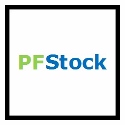Here are the latest money market interest rates of the banks that I've been tracking on my blog. Note that these rates are sorted by APY, and represent institutions that I have accounts at, or have otherwise mentioned in my blog:
1.40% Popular Direct Savings
1.40% FNBO Direct Online Savings
1.35% American Express High Yield Savings
1.30% Marcus by Goldman Sachs (GS Bank) Online Savings
1.30% Discover Bank Online Savings
1.30% Capital One 360 Money Market
1.25% Ally Bank Online Savings
0.20% Unify (fmr. Western) FCU Money Market
0.04% Citibank Savings Account
0.04% Chase Plus Savings
In some cases, MMA interest rates are tiered. If this is the case, I usually report the interest rate at the $10,000 tier in these updates. Rates are believed to be accurate as of 12/27/17. I did not include banks that had special, or introductory rates in the list because they are not ongoing interest rates. I am also not including non-liquid accounts such as CD's in the list. I have included one credit union in the list so that readers have a comparison point with banks.
Several other banks have bumped up their money market rates and most of the ones in my list are now paying 1.25% or more. I expect that some increase will become a trend for a while.
The frequent changes show how variable the money market is. Because this is a constantly moving target, it has been very hard to keep track of the rates that I've been getting in my various money market accounts, and this is the main reason I've decided to compile a list of these annual percentage yields.
So, that is the latest list of money market rates. Please let me know if you know of any higher interest rates.
PFS
Does the President Control Gas Prices?
20 hours ago

